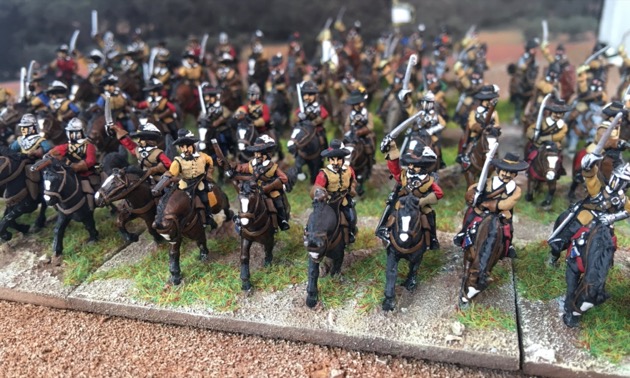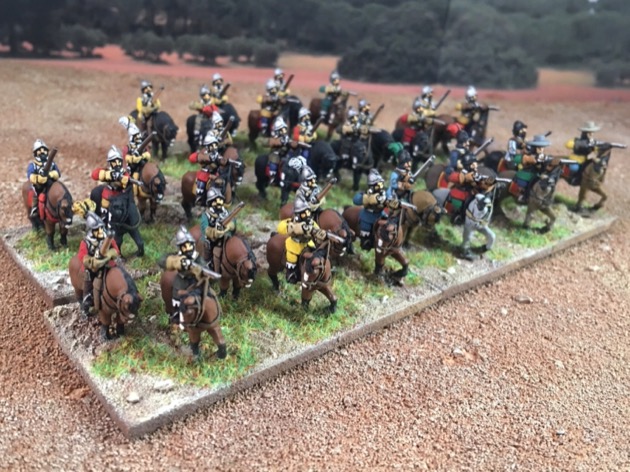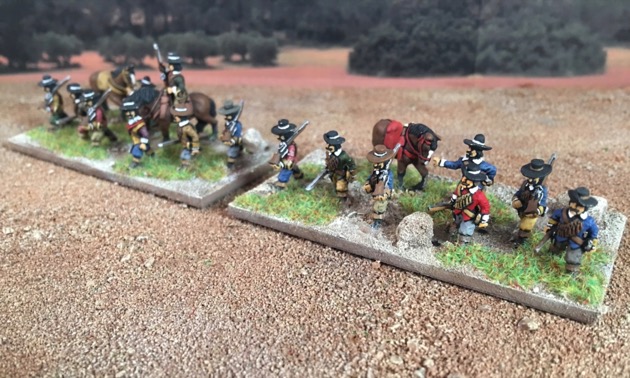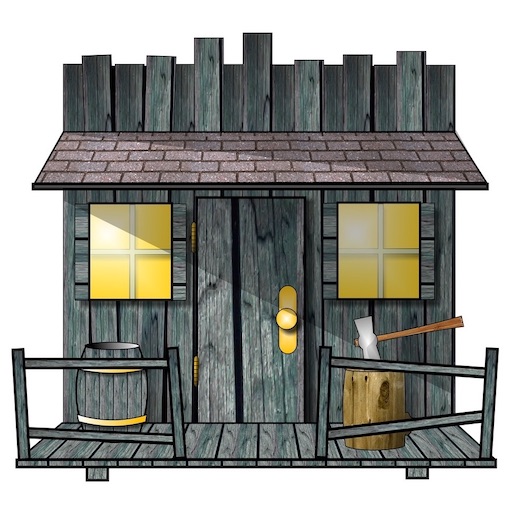Since I’ve published Tilly’s Very Bad Day I figure I should update my painting guide for the Thirty Years War (1618-1648). This is the guide for the Imperialists throughout the war.

General Guidelines on Imperialists
The Imperialists, like their Spanish relatives, favoured individuality over uniformity, although some Imperialist Imhaber provided their regiments with uniforms. Following Brnardic (2009) Imperialists should be painted like this:
| Item | Colour |
|---|---|
| Hats (if worn) | Various shades of brown or grey; white plumes |
| Hair (their own) | Various |
| Tunic, cloaks, cape | Variety of shades of white, black, brown, red-brown, orange, green, grey and/or blue. Whitish-grey (‘pearl grey’) was cheapest and may have predominated at the end of the war. | Breeches | The same variety of colours at tunic but often a different colour. Breaches were tied at the knee by a ribbon in a matching or contrasting colour |
| Shirt | White |
| Stockings | White, grey, unbleached, or red. |
| Leather (Boots + straps + belt, etc) | Brown or black. |
| Plate armour and helmets | Blackening and burnishing were used to prevent rusting. Germans favoured blackening. |
| Buffcoat | Buff (often worn over plate armour) |
| Sash, scarves | Pretty much white until May 1632 then red. |
Imperialist Generals
All the normal Imperialist rules apply to their generals. They are, effectively, rich cavalry.

Imperialist Cavalry
On occasion cavalry regiments or companies were issued coats of a uniform colour, but during this period cavalrymen usually wore whatever they liked (Brzezinski, 1993).
Broadly speaking there were three types of cavalry in the Thirty Years War (Brzezinski, 1993). The type affected how the men behaved, or more importantly for a painting guide, how they looked.
- Arquebusier (Harquebusier, Bandelier Reuter, Carbine): men armed with an arquebus. The better equipped would have a back and breast and/or a helmet.
- Horsemen (Reiters, Lätta ryttare): men armed with pistols. They might have back and breast and a helmet, or a hat and no armour at all. For example, native Swedish cavalry.
- Cuirassier (Kürisser, Kürassirer, corazzen): men in 3/4 armour and helmet, armed with pistols. Over time their equipment lightened and they essentially morphed into Horsemen.
Cuirassiers
The Germans were famous for their heavily armoured cuirassiers.




Horsemen
Over time cuirassier equipment lightened and they essentially morphed into horsemen.


Arquebusier (Harquebusier, Bandelier Reuter, Carbine)
The German mounted arquebusiers were called “bandelier reuter” or “bandellier reiter” depending on which source you believe.

My mounted arquebusiers are a little too brightly coloured as many of them started life as part of uniformed Dutch units. That was before I realised cavalry uniforms weren’t really a 30 Years War thing. So I rebased and mixed them up. If I did this again I’d tone them down a fair bit. More blacks and browns with splashes of colour.


Imperialist Infantry
When the ‘Inhaber’ was inclined, and could afford it, some regiments were issued uniforms in the colours of the Inaber’s coat-of-arms (Brnardic, 2009). This was probably the exception and usually the troops would have worn an assortment of colours and styles.



Colours were a variety of shades of white, black, brown, red-brown, orange, green, grey and/or blue. Later in the 17th Century whitish-grey (‘pearl grey’) was generally adopted for economy reasons and this may have been true in the latter part of the 30 Years’ War.


Officers wore more expensive cloths including a wide lace collar (Brnardic, 2009). Officer sashes were pretty much white until May 1632 then red
Armour was usually blackened in this period. The Germans were famous for it. But some men may have gone for the bright look via burnishing.
Imperialist Dragoons
All the usual rules for Imperialist infantry apply to dragoons. The difference is they rode a horse and wore boots.


Imperialist Artillery
German artillery in the 16th century always had a black carriage with red metal fittings (Miller, 1976), and this may have continued into the 17th century. The wheels were left their natural colour. Barrels were bronze.

Imperialist Field Signs
Imperial and Bavarian troops at the battle of the White Mountain used white symbols, particularly sashes and scarves. The enemy wore sky-blue.
Catholic League soldiers in the 1631 campaign wore a white stripe or ribbon around the arm or, alternatively, green oak leaves or straw.
In May 1632 Wallenstein ordered red symbols in his army, usually neck scarves or sashes (Brzezinski, 1993). All other colours were forbidden on pain of death.
Imperialist Flags
The Imperialist Flags featured the Doppeladler (double-headed eagle), the Burgundian ragged-cross, and the Emperor’s cipher (FII or FIII) (Brnardic, 2009). The Doppeladler was on the obverse of the flag. It was usually shown with the Imperial crown with gold haloes, held a sceptre and sword of state, and had the Habsburg coat-of-arms on its breast. The latter was a horizontal silver bar on a field of red, sometimes surrounded by the chain of he Order of the Golden Fleece. From 1620 the Imperial flags featured an image of the Virgin Mary on the reverse. At some point during the war Regimental Flags adopted the Virgin Mary as well. These ‘Sun Colours’ became universal and usually featured the Madonna standing on a crescent moon, surrounded by sun rays and sometimes holding the infant Jesus, against a white circular background framed in gold. The background colours were up to the Inhaber, usually based on their coat-of-arms. There was no regulation for the edging. Company flags carried a part of the regimental emblem but varying the background. Symbols representing Fortuna, Virtue, Vigilance, War and Peache, Lif and Death, animals, and saints all appears. Wallensteins’s troops carried flags with images of Mars and Venus. Flags of the Reich’s princes had the Doppeladler on the obverse and the prince’s arms on the reverse, the background and edge were in the state colours. Mottoes were in Latin, German, Italian or French. Mottoes were most common on cavalry standards.
And if you are looking for further inspiration:
Croats, Hungarians and Polish
Croats, Hungarians and Polish all had distinctly oriental costume. I’ve lumped them together because, although the national costumes differed, the colours were pretty similar. Both Croats and Polish cossacks wore a fur trimmed cap with bag; think a low busby or colpack. Generally infantry variants will have more brown and grey than their cavalry compatriots.
Note: Grenzers were light infantry troops from the Croatian and Transylvanian Military Frontier in the Habsburg Monarchy, so could be either Croatians or Hungarian. However, the Hungarians (and their Balkan neighbours) also had hajduk, a type of peasant irregular infantry. So I’ll reserve the term grenzer for the Croatians.
| Item | Colour |
|---|---|
| Hats |
Croat fur trimmed cap with bag: fur trim either natural (tan), white, or black; bag red, black and perhaps other colours Polish fur trimmed cap with bag: fur trim maybe restricted to black and perhaps other colours; bag red, black and perhaps other colours Hungarian felt cap: Black |
| Tunic | red (preferred by Croats), green, blue, yellow |
| Trousers | red (preferred by Croats), green, blue, grey, white |
| Clock (if worn) | red (preferred by Croats) or anything else they fancied |
| Shirt | White |
| Leather (Boots + straps + belt, etc) |
Brown or black. Except some Hungarians has low yellow boots in the Turkish style |
| Croat Waist Sash | red, green, blue, yellow |
| Croat Cravat | white, blue and probably other colours |
Croats
Croatian cavalry is universally referred to as “Croats” however Croatian also provided infantry (grenzer). Both were irregulars recruited from the frontier with the Turks. I’ll refer to both as Croats unless it matters.
Croats wore a tunic, trousers and wait sash of red (preferred), green or blue (Brnardic, 2010). Judging from the illustrations in grey or white trousers were also possible, and perhaps probable for infantry. Yellow tunics and waist sashes also appear. The bag at the top of the hat was also usually red although the illustrations also show black and I guess other colours were possible; the hats had a fur trim, either natural (tan), white, or black. Croats also fancied a long red clock with a hood; kind of a red riding hood thing. The cravat necktie was a distinctive feature of Croat dress; illustrations show white and blue. Most of these garments might have a fur trim.

I think my Croats are quite a good match to the description. The hats aren’t quite right. They have the fur trim but the bag in the top centre is the same as the fur trim. Typically the the hat bags would be red although black and other colours are possible.

Hungarians
Hungarian hussars (cavalry) and Hayduk (infantry) featured in Imperial armies. Croat colours work for the Hungarians except the hats were black, with no fur (Brnardic, 2009, 2010).
Polish
You can use the Croat colours for Polish cossacks (kozaks). Hussars could sport the the red bag on the fur cap, like the Croats. The only illustration I have has black fur trim (Brnardic, 2010), but I’m not sure if that is a general rule.
Where to get Tilly’s Very Bad Day
Tilly’s Very Bad Day is available for Download (PDF).
Acknowledgements
Roland Davis painted the vast bulk of my Thirty Years War armies. The cuirassiers, mounted arquebusiers, dragoons, and most of the generals, artillery and horsemen are his.
Ian Galley painted the shot, croats, and one of the cannon stands.
John Mclennan painted the mystery general. Or he got it from ebay.
Ebay provide some of the horsemen in the back of the pictures.
My only contribution is to put them all on Big Bases.
References
Brnardic, V. (2009). The Imperial Armies of the Thirty Years’ War (1): Infantry and Artillery [MAA 457]. Osprey.
Brnardic, V. (2010). The Imperial Armies of the Thirty Years’ War (2): Cavalry [MAA 462]. Osprey.
Brzezinski, R. (1993). The Army of Gustavus Adolphus (2): Cavalry [MAA 262]. Osprey.
Miller, D. (1976). The Landsknechts [Men-At-Arms 58]. Osprey.


Lovely work. I really like the carbineers, even if you say they are a little too colourful.